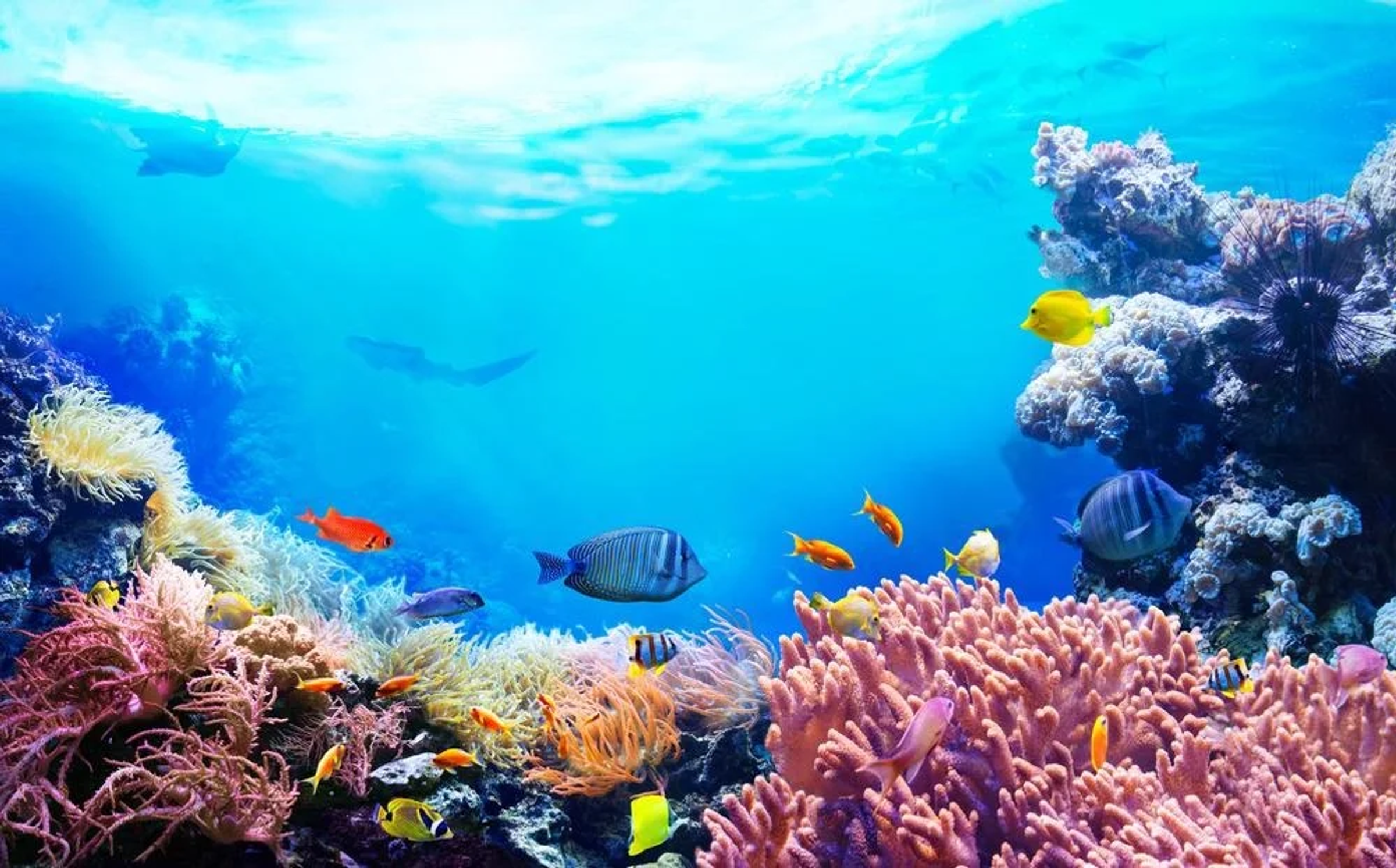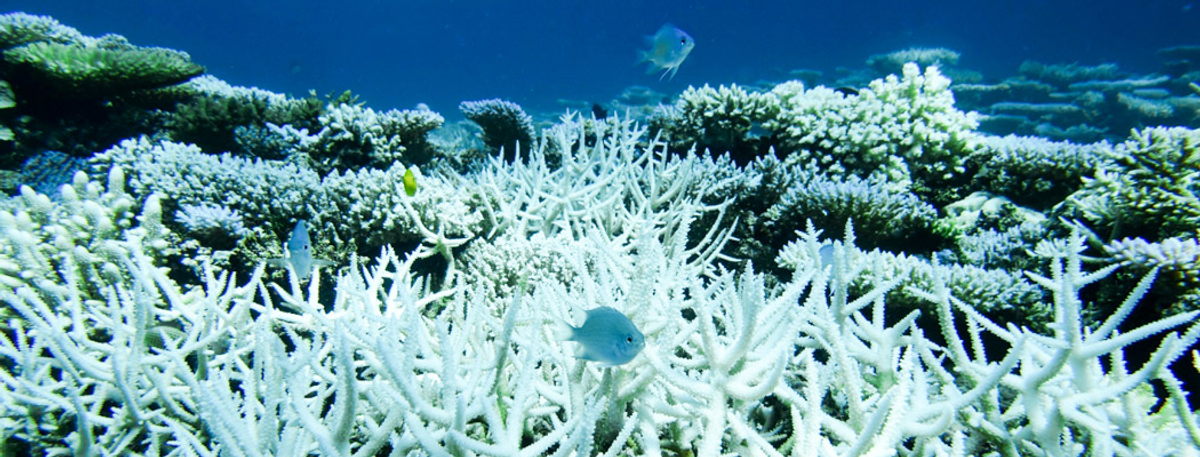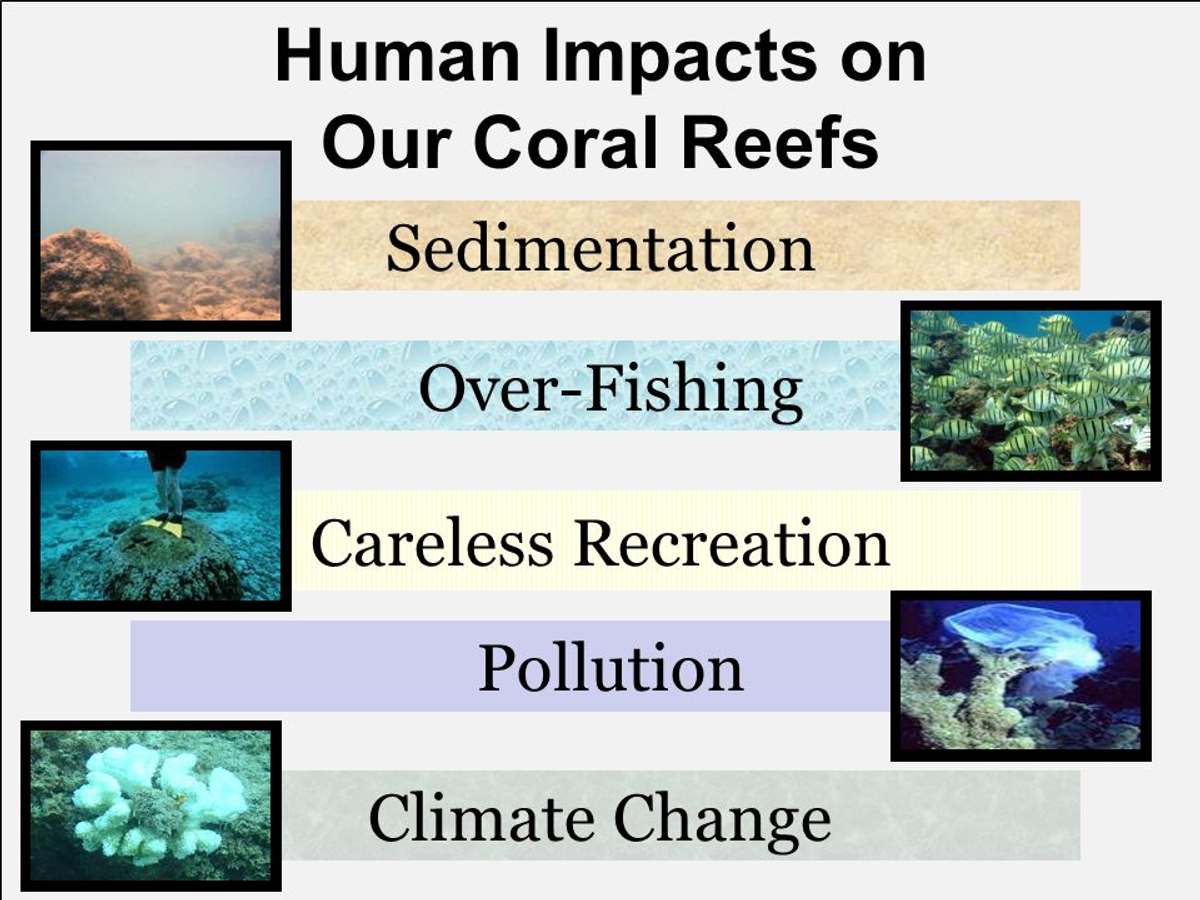Coral Bleaching
by Vidya, Science Captain

Coral Bleaching
by Vidya, Science Captain
One of the world’s largest coral reefs - The Great Barrier Reef - is one of Australia’s natural gifts. What exactly is a coral reef? A coral reef is formed by tiny plant-like animals - polyps. A polyp uses salts from sea water to build a cup-like limestone skeleton. This is coral. An algae - Zooxanthellae - lives within the polyps’ bodies and gives corals their vivid colours.
In recent years, the influence of man and natural factors have caused harm to the Great Barrier Reef. Coral bleaching is a phenomenon that happens when there is an increase in the reef’s water temperature. Coral bleaching has a harmful effect on the reefs and the Great Barrier Reef especially as it also causes a chain reaction of negative events. Warmer waters kill the algae which inhabit corals and give them their bright colour, causing the coral to lose their colour and resulting in the ‘bleach’ effect. However when the algae die, so do the marine animals who feed off them, resulting in a disruption of the food chain. Researchers and scientists accredited sudden changes in water temperature to natural events.


These tiny algae produce about 90% of the food the coral needs to grow. Bleaching happens when sea temperatures get too high or low, causing the algae to get 'stressed out' and leave the coral. This then turns the coral white and, with its main source of food gone, it is left very vulnerable.
Human activity can contribute to coral bleaching. Activities like deforestation, and the burning of fossil fuels for heat and energy increase greenhouse gases in the atmosphere and further cause ocean temperatures to rise and contribute to sea level rise. These changes lead to more frequent coral bleaching events. The disappearance of coral reefs from our planet means that many marine species will vanish after their only source of food disappears forever.


The best way to preserve the world’s coral reefs is to take action on global warming. Among other things, we need to recycle and dispose of trash properly because debris in the water can be harmful to coral reefs, minimise use of harmful fertilizers, use environmentally-friendly modes of transportation to reduce the harmful greenhouse gas effects, reduce stormwater runoff to keep our oceans clean and try to save energy at home and at work.
The Great Barrier Reef is home to over 300 species of marine life. It is also a great tourism destination for people to come and see the beautiful, colourful corals. If further harm were to come to it, the impact on the environment would be devastating.
https://www.epa.gov/coral-reefs/what-you-can-do-help-protect-coral-reefs
https://www.aims.gov.au/docs/research/climate-change/coral-bleaching/bleaching-events.html